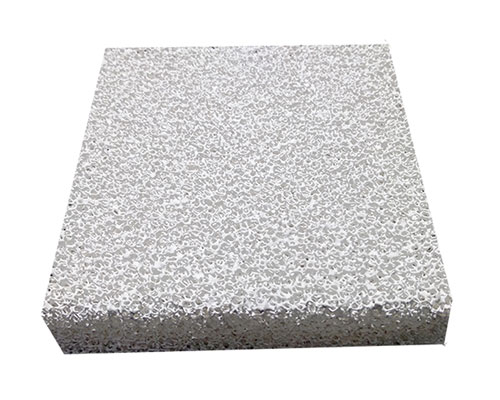In order to manufacture a molten aluminum alloy filter, aggregates such as ceramics are formed into a net shape and baked to obtain an aggregate net-like member. Then, the aggregated mesh member is impregnated with any one or more of the aforementioned coating compounds to coat its surface. When an adhesive is used, the mesh member is sequentially impregnated with the adhesive and the coating compound. Alternatively, it is impregnated with a mixture of coating compound and binder. In any case, due to the original physical properties of the coating compound and the adhesive, the impregnating material used to impregnate the mesh member exhibits a relatively high viscosity. The higher the viscosity of the impregnating material and the finer the mesh of the aggregated mesh member, the more difficult the coating process becomes. Especially, in fact, it is necessary to completely cover not only the outer surface of the mesh member, but also the inner surface of its opening (hole). Even if these surfaces are located in the center of the mesh member, it is impossible to completely cover the entire mesh member surface.
Therefore, when the coating composition is applied to the internal filter, the coating efficiency with respect to the entire surface of the mesh member is low, so that the internal filter has low efficiency in removing impurities in each filter unit. Volume and unit weight of the filter. This low removal efficiency may prevent the internal filter from being applied to the filtration of molten aluminum alloy.
Adtech provides a molten aluminum filter with improved efficiency in removing particularly fine inclusions of about 10 to 25 μm.
The molten aluminum alloy filter includes an aggregate mesh member made of a refractory material and a coating layer formed on the surface of the mesh member. The coating has sodium silicate and sodium carbonate that can soften or become sticky at the temperature of molten aluminum or molten aluminum alloy.
The sodium silicate is directly coated on the surface of the mesh member, that is, no adhesive is used. The filter can be arranged between the melting furnace and the casting mold. It is placed in a filter box placed in molten Al.

